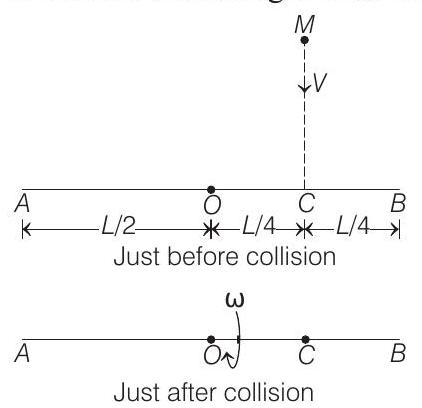Rotation 4 Question 8
9. A homogeneous
Show Answer
Answer:
Correct Answer: 9. (a)
(b)
Solution:
- In this problem we will write

(a) Angular momentum of the system (rod + insect) about the centre of the
(b) Due to the torque of weight of insect about
Let at time
At time
Substituting these limits, we get
Substituting in Eq. (i), we get






